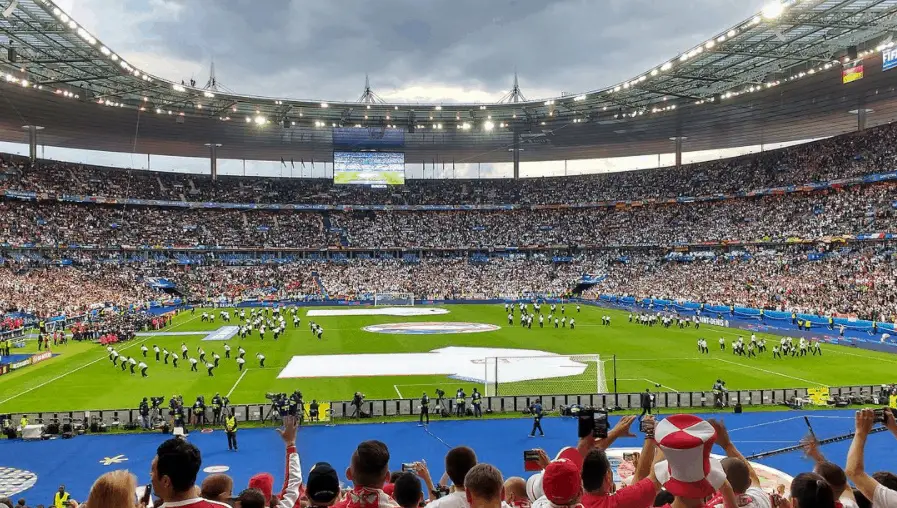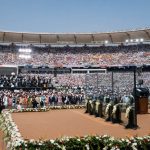In this magnificent arena, a lot of football history has happened (or soccer history as 9 countries call it).
In this post, you’ll discover the ultimate list of facts about the Stade de France, the biggest stadium in France and one of the most famous football stadiums in Europe!
1. The Stade de France is the national stadium of France
The Stade de France is an amazing arena that serves as the national stadium of France. It was built especially for the FIFA World Cup of 1998 which was held in France that year.
The stadium is used frequently by both the France national football team and the French rugby union team when they play international games in various competitions.
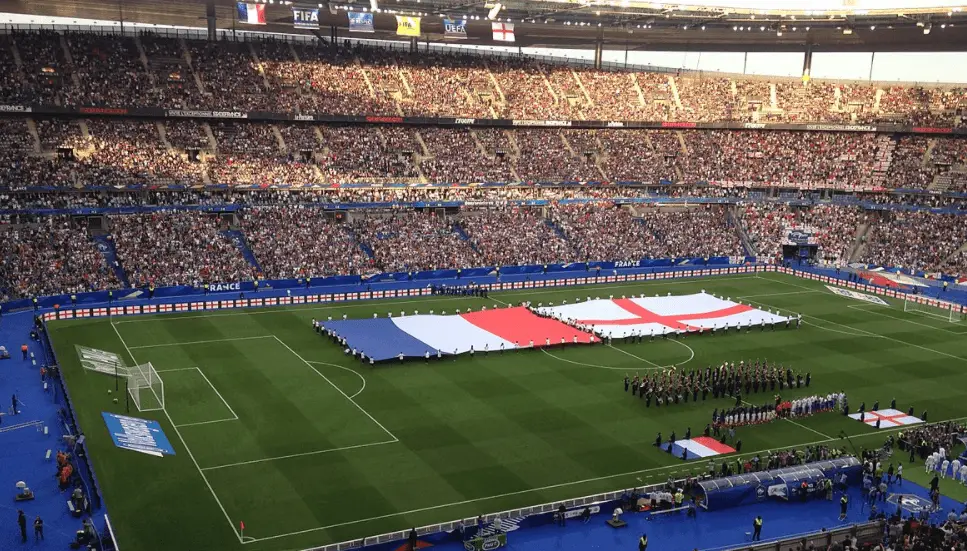
2. The stadium is located just north of Paris
The location of the stadium had to be as close as possible to the city of Paris once a decision was made to build a new national stadium. Since there wasn’t any space left within the borders of Paris, it had to be built in a community bordering the city.
That’s why the Stade de France was built in the city of “Saint-Denis.” This town is located just north of Paris and about 9.4 kilometers (5.8 miles) away from the city center, which means it’s pretty much part of the metropolitan area of France’s capital.
This is emphasized by the fact that the stadium can be reached by the Paris Métro system through line 13 referred to as “Saint-Denis – Porte de Paris.”
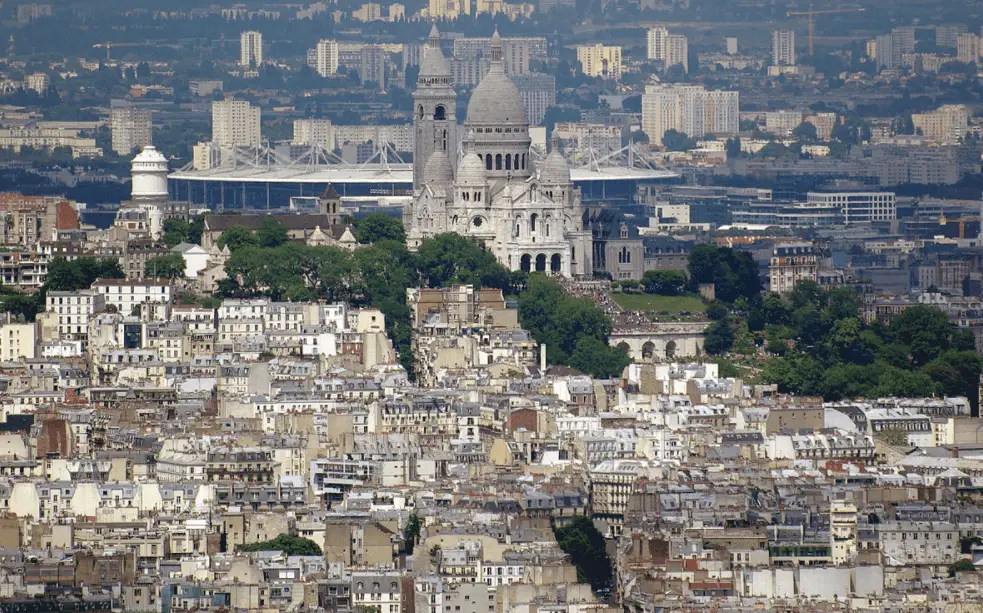
3. It’s not the largest football stadium in Europe but holds another record
The stadium has a seating capacity of 80,698 spectators for football and rugby games and can seat 78,338 people for athletics events.
These numbers make it just the 8th-largest stadium in Europe and it doesn’t even rank in the top 30 largest stadiums in the world.
It is, however, the largest stadium in Europe for track and field events!
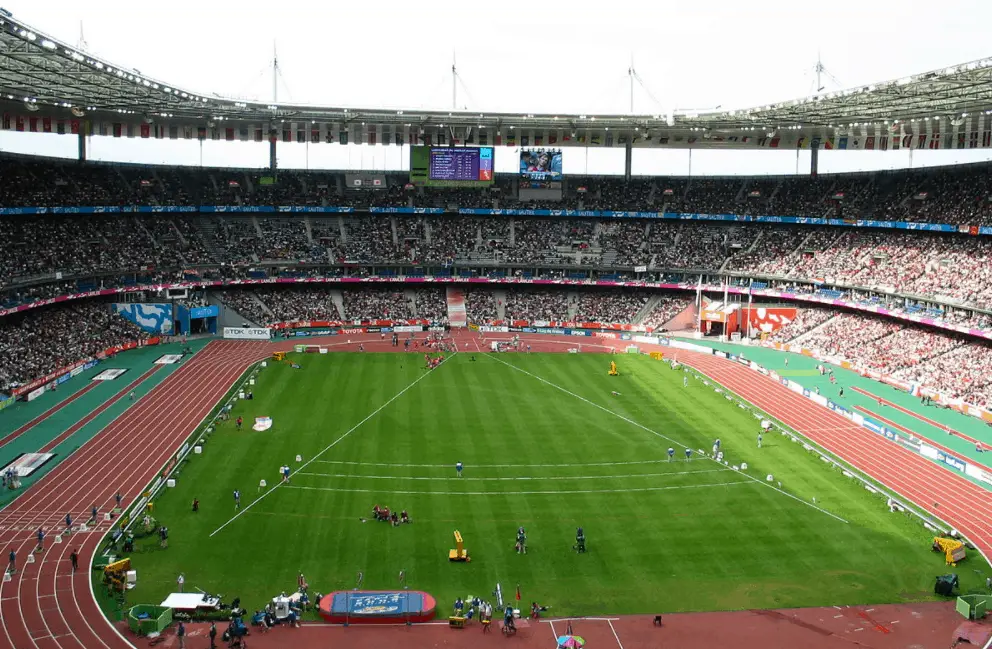
4. The decision to build a new national stadium was a historic one
On July 2, 1992, the decision that France would host the 1998 FIFA World Cup was made. This instantly opened up the discussion for a new national stadium built especially for this event.
One of the most remarkable facts about the Stade de France is that up until this moment, it was 7 decades ago that a national stadium had been built in France.
This stadium was the Stade Olympique Yves-du-Manoir in Colombes in the northwest of Paris. This stadium served as the main venue for the 2024 Summer Olympics and was also the venue for the 1938 World Cup Final between Italy and Hungary, which Italy won 4-2.
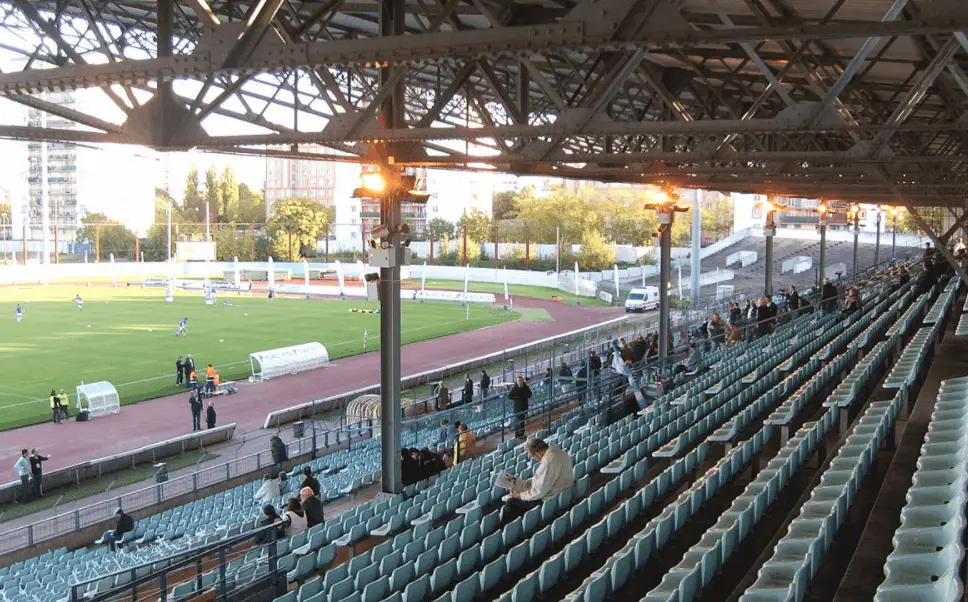
5. The name of the stadium was recommended by a French football legend
Nearly 3 years had passed between the decision to build a new national stadium and actually starting construction. It wasn’t until April 30, 1995, that the design was ready, and all building permits were granted.
Construction finally started on May 2, 1995, just 31 months before the kick-off of the World Cup in 1998!
At the start of the construction, the stadium was referred to as the “Grand Stade,” which translates to “Big Stadium.” It wasn’t until December 4, 1995, that the French Ministry launched a competition to come up with a final name.
It was Michel Platini, one of the most famous footballers in history, who recommended the name “Stade de France!”

6. The Stade de France has a very expensive roof
One of the most fascinating features of the stadium is its magnificent roof. It doesn’t just protect every seat from rain but also doesn’t cover any part of the playing field, nor is any part of the field obstructed.
The roof weighs a whopping 13,000 tonnes (yes, that’s 13 million kilos!), covers an area of 6 hectares (14.82 acres), and about €45 million was spent to build.
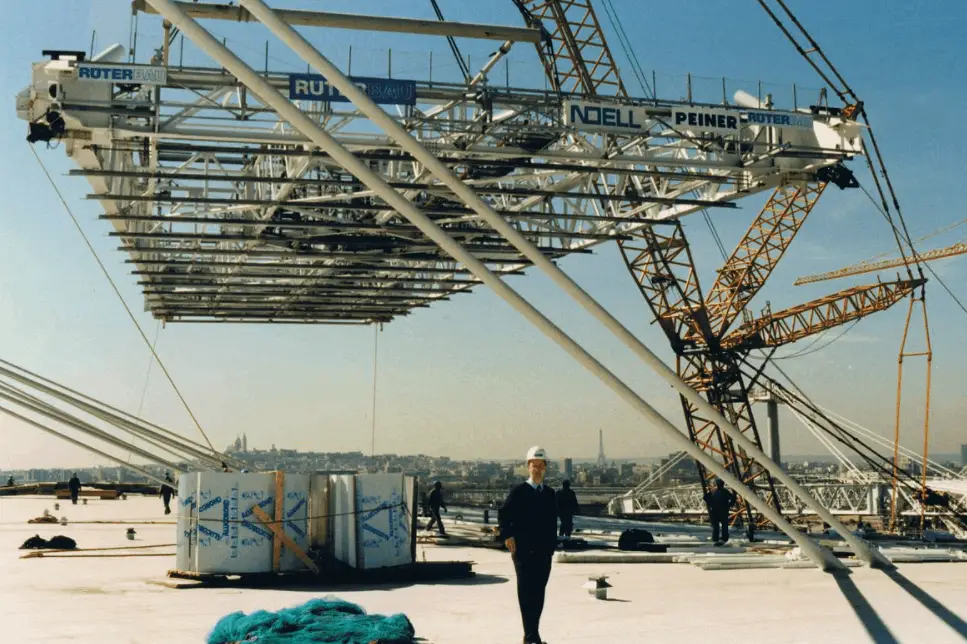
7. Building the stadium was a massive endeavor
Apart from the magnificent roof, which was the final part of the construction phase, a lot of work had been done to prepare the area and lay the foundations of the stadium.
A year after construction had started, about 800,000 cubic meters (28.25 million cubic feet) of soil had been moved and 180,000 cubic meters (6.35 million cubic feet) of concrete had been poured.
The total cost to build the stadium, which was considered to be an absolute masterpiece at the time, and basically still is, ended up being about €290 million!
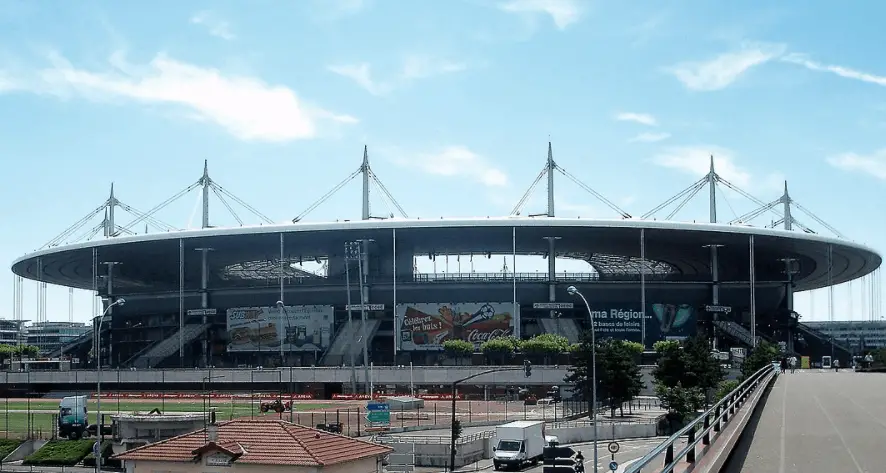
8. The stadium features a movable stand
One of the most fascinating facts about the Stade de France is that it can host both football games, rugby games, and athletics competitions as well.
During football and rugby games, however, the capacity of the stadium can be increased because it features a movable stand. This stand can be retracted to uncover part of the athletics track.
This allows football or rugby games to be played without the athletics track, something that improves the overall experience.
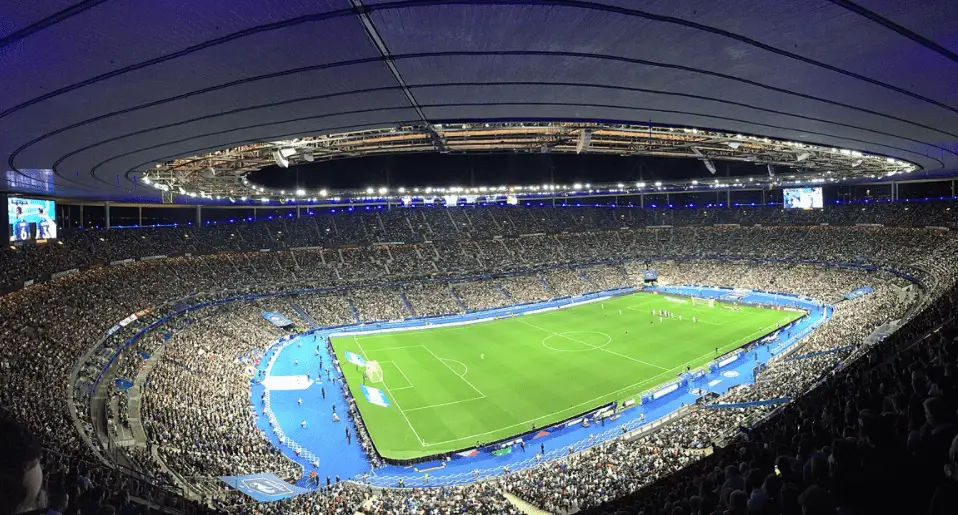
9. The grass inside the stadiums is replaced several times a year
The playing field of the Stade de France covers an area of 9,000 square meters (96,875 square feet) and is 120 meters (393 feet) long and 75 meters (246 feet) wide, which is quite big.
The grass is kept in excellent condition because it’s replaced several times a year. It consists of GrassMaster technology which is a combination of natural grass and artificial fibers.
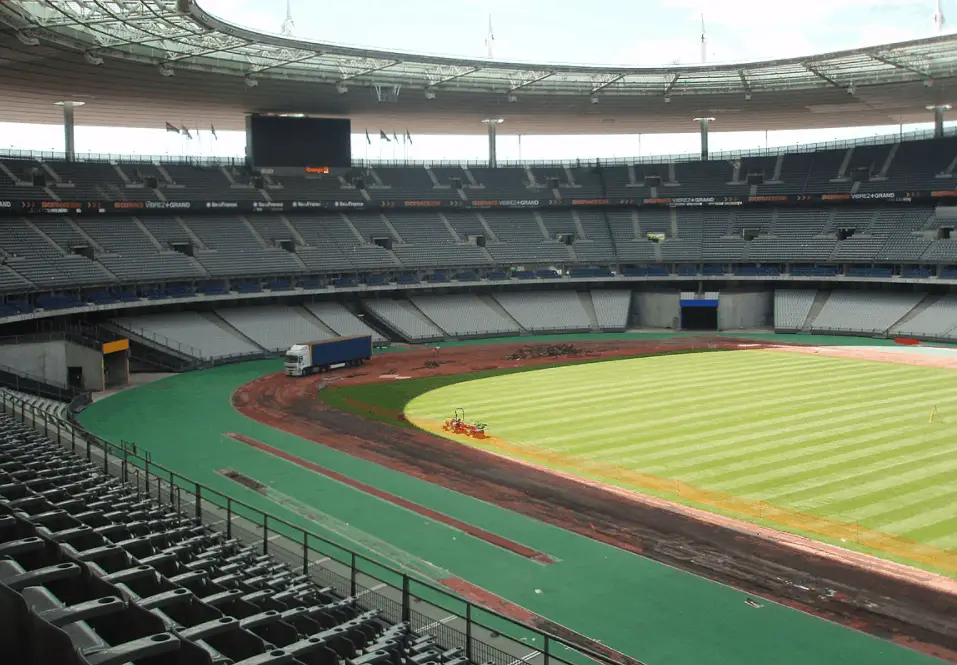
10. The first football game in the stadium ended in a victory for France
Despite the pitch being in excellent condition most of the time, that’s not always the case!
One of the most peculiar facts about the Stade de France is that there is no heating underneath the pitch, which means that the playing field can freeze over during the winter. Shortly after the stadium was completed, a rugby match had to be canceled for this exact reason.
The opening match between France and Spain was played on January 29, 1998, and the pitch was virtually unplayable because of this, which was quite embarrassing.
Despite this, the opening game was won by France with 1-0 with the only goal scored by Zinedine Zidane.
11. The reason the stadium was built ended in a huge success for France
The embarrassment was quickly washed away later that year as France not only hosted the World Cup but also won it!
They comfortably beat Brazil 3-0 in the 1998 FIFA World Cup Final. 2 goals were scored by Zinedine Zidane and a final goal by Emanuel Petit in extra time.
It was the first time that France won the World Cup Football as well, making the stadium shine even more!
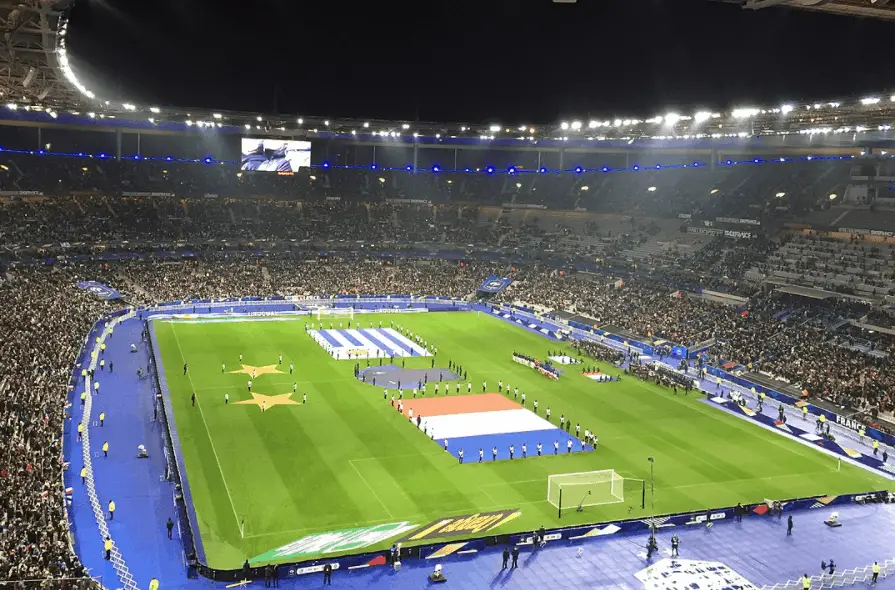
12. It has been the host of 2 Champions League finals
The Stade de France has been kind to Spanish football clubs because both Real Madrid in 2000 and FC Barcelona in 2006, won while the stadium was the venue of the UEFA Champions League.
Real Madrid beat fellow Spanish club Valencia 3-0 and FC Barcelona beat English club Arsenal 2-1.
13. It has hosted both a football and a rugby World Cup Final
One of the most amazing facts about the Stade de France is that it’s one of only 2 stadiums in the world that has hosted both a football world cup and a rugby world cup!
After the 1998 FIFA World Cup, the stadium was the venue of the final of the Rugby World Cup in 2007, which was won by South Africa against England by 15-6.
The only other stadium in the world to host both world cups is the Nissan Stadium in Yokohama in Japan. It hosted the FIFA World Cup Final between Brazil and Germany in 2002 (Brazil won 2-0), and the Rugby World Cup Final between South Africa and England in 2019 (South Africa won 32-12).
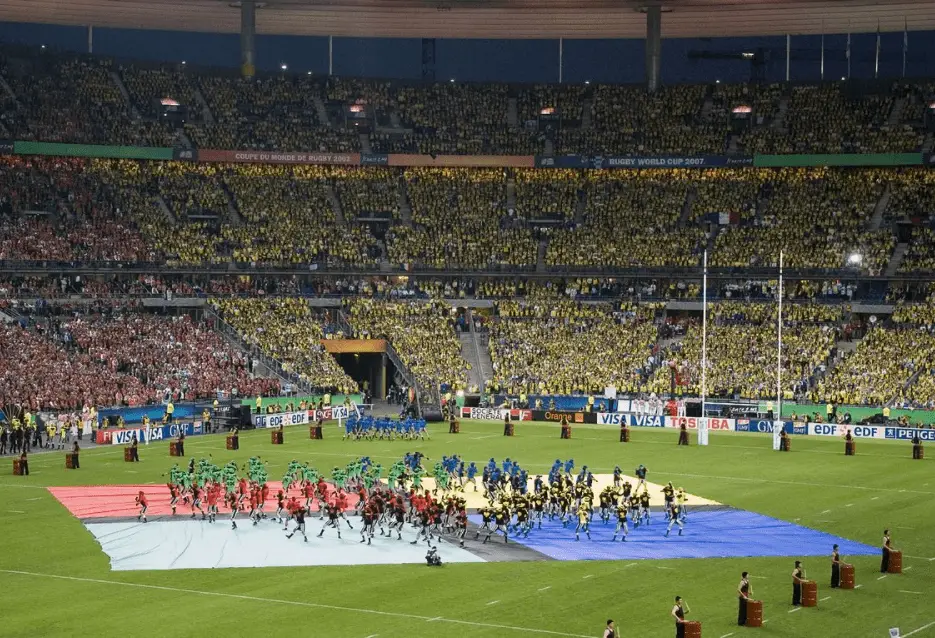
14. Some of the biggest stars in the world have performed at the Stade de France
While the stadium is mostly known for international games of the French football and rugby teams, as well as the venue of various athletics competitions, it’s also used for concerts.
Just like many other famous stadiums, including Wembley in England, some of the world’s biggest stars have performed at the Stade de France.
These include (but are not limited to):
The Rolling Stones, Tina Turner, U2, Metallica, Guns N’ Roses, Muse, Rihanna, AC/DC, Justin Timberlake, Céline Dion, Bruno Mars, Beyoncé, Jay Z, Coldplay, Red Hot Chili Peppers, One Direction, Eminem, Lady Gaga, Paul McCartney, Roger Waters, Prince, Madonna, The Police, and Depeche Mode!
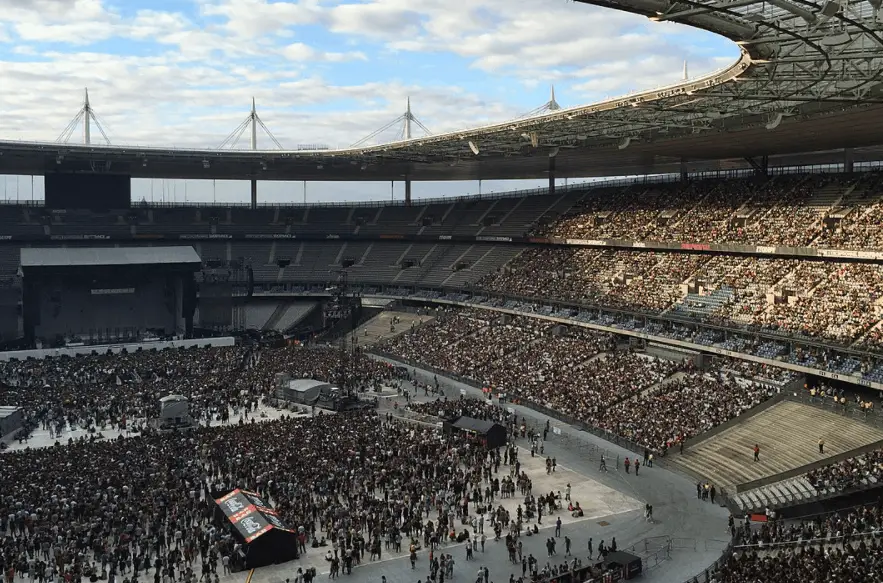
15. The stadium will be the main venue of the 2024 Summer Olympics
The stadium is owned and managed by the “Consortium Stade de France.” This means that it will continue to be the venue for numerous big events in the future as well.
Some of the most notable are the 2023 Rugby World Cup, in which it will host both pool games and the final. The other notable event is the 2024 Summer Olympics. The stadium will host both the opening and closing ceremonies and serve as the main venue of the athletics events too!
